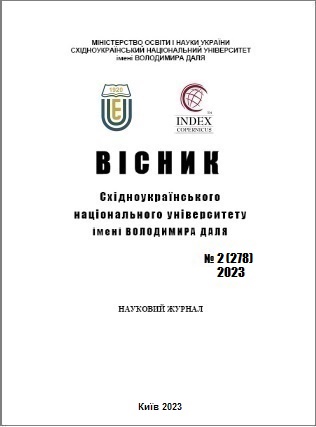Features of technology transfer in the conditions of globalization
DOI:
https://doi.org/10.33216/1998-7927-2023-278-2-66-71Keywords:
technology change, education development, knowledge economy, business incubators, globalization process, technology transferAbstract
The presented paper analyzes the current state of technology transfer and highlights its main features. Technology transfer refers to the process of transferring knowledge, ideas, know-how and technical solutions from one organization, industry or country to another in order to use them to improve production, develop new products or services, improve technical skills and strengthen the innovation base.
Technology transfer can occur at different levels: from international organizations to countries, from large companies to small and medium-sized enterprises, from research institutions to industrial sectors. It can be done through various channels such as licensing, franchising, joint ventures, technology exchanges, technology acquisitions and other forms of cooperation.
It should also be noted that the high level of globalization creates unique opportunities for technology transfer between countries and regions. A successful transfer requires attention to cultural, legal, organizational and other aspects that affect its effectiveness.
Technology transfer in the context of globalization involves interaction between different cultures and contexts. This requires attention to cultural characteristics and different approaches to the development and application of technologies in different countries.
That is why technology transfer requires not only the transfer of the technology itself, but also the transfer of knowledge and skills necessary for its effective application. This may include staff training, specialist training and cooperation between universities and industry.
The presented work uses the methods of induction, deduction, analysis and synthesis to present the main conclusions of the study.
Thus, the conditions of globalization can create challenges regarding the protection of intellectual property during technology transfer. Ensuring appropriate legal protection and compliance with patent rights is an important aspect of interaction between countries and organizations.
Effective technology transfer requires the establishment of partnerships and cooperation between various parties. These can be government bodies, research institutions, academic institutions and private enterprises. Joint projects and exchange of experience contribute to successful technology transfer.
Globalization contributes to the growth of the volume and speed of technology transfer. Thanks to improved connections and means of communication, information about new technologies spreads quickly around the world, which facilitates the active exchange of knowledge and innovation.
References
1. Khaminich S., Broshkov M., Kuznietsov E., Ptashchеnko O., Milcheva V., Boiko O. Transformation of Managerial Innovations in Conditions of Digitalization of Market Relations. International Journal of Recent Technology and Engineering (IJRTE). ISSN: 2277-3878, Volume-8 Issue-4, November 2019, Р. 7888-7893. DOI:10.35940/ijrte.D9137.118419. URL: https://www.ijrte.org/wp-content/uploads/papers/v8i4/D9137118419.pdf
2. Козик В. В., Манзій В. П., Стояновський А. Р. Трансфер технологій: сутність та особливості здійснення. Інвестиції: практика та досвід, 2009, 16: 23-25.
3. Отенко В., Птащенко О., Корсунова К., Карталія Д.. Вплив експортної переорієнтації України на діяльність підприємств: маркетингові та управлінські аспекти. Вісник Східноукраїнського національного університету ім. В. Даля, вип. 6 (270), 2021, с. 121-124, doi: 10.33216/1998-7927-2021-270-6-121-124. http://visnik.snu.edu.ua/index.php/VisnikSNU/issue/view/26
4. Петрів Д. І. Участь України в процесах міжнародного трансферу технологій. 2022. PhD Thesis. Національний авіаційний університет.
5. Птащенко О. В., Вовк В. А. Особливості торговельного співробітництва України в сучасних умовах глобалізації. Бізнес Інформ. 2021. №4. C. 42–47.
6. Птащенко О.В., Афанасьєва О.М. The impact of technology transfer on the high-tech industry. Матеріали V науково-практичної конференції «Економічний розвиток і спадщина Семена Кузнеця» : тези доповідей, 26-27 листопада 2020 року – Одеса : Видавничий дом «Гельветика», 2020. – 410 с. (С. 358-359)
7. Хворост О. О., Вернидуб Н. О., Омельяненко В. А. Міжнародні аспекти ефективності трансферу технологій. Інноваційна економіка. 2012. № 27 (1). С. 52–56.
8. Шостак Я. М. Сучасні характеристики міжнародного трансферу технологій транснаціональними корпорациями [Електронний ресурс] / Я. М. Шостак, Т. О. Кобєлєва, П. Г. Перерва // Законодавство України у сфері інтелектуальної власності та його правозастосування: національні, європейські та міжнародні виміри : матеріали 10-ї Всеукр. наук.-практ. конф. молодих вчених та студентів з проблем інтелектуальної власності, 30 вересня 2022 р. / ред. кол.: О. П. Орлюк ; Київ. нац. ун-т ім. Т. Шевченка. – Електрон. текст. дані. – Київ, 2022. – С. 396-400
9. Щедріна Т. Особливості трансферу технологій в корпоративних структурах / Т.І. Щедріна // Економіка і прогнозування. – 2006. – С.89- 10.

